Here is a continuation of the blog "Ginza 5-8-chome Walking I" introduced last time![]() .
.
Click here for the previous article. → ![]() /archive/2013/07/post-1716.html
/archive/2013/07/post-1716.html
This is the place shown in bold letters![]() in the second half.
in the second half.
<line So far >
Ginza Station: Monument of Sukiyabashi ... Toya Kitamura & Toson Shimazaki Monument ... Takuboku Ishikawa poetry monument ... Pedestrian paradise ... Ruins of the commercial law workshop ... Kinharu Yashiki Ruins of Ginza Brick remain Monument ... Monument of Ginza willow ... Shibakuchi Gomon Ruins of Sanumabori Ruins ... Former Japanese National Railways railroad crossing signal at Tokyo Information Center ... Site of Sakujom ...
![]() Departing from the ruins of Sanjumabori ...
Departing from the ruins of Sanjumabori ...
As a continuation of the previous time, three large stones next to the explanation board of the site of Sanjumabori.
These are at the exit of the highway. It's hard to understand.
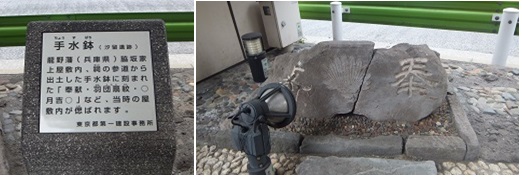
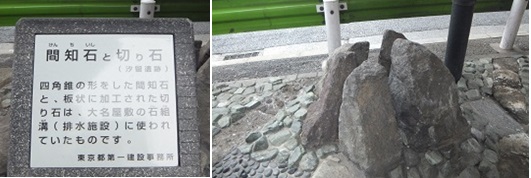

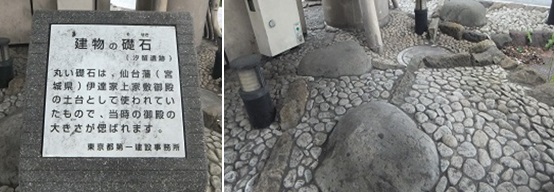
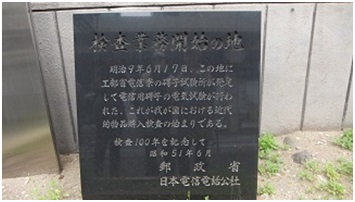
![]() In Japan
In Japan
Land at the beginning of modern goods purchase inspection
In 1876 (1876)
An insulator laboratory in the Ministry of Engineering's telegraph dormitory will conduct an electrical test of electrical insulators for telegraphs here.
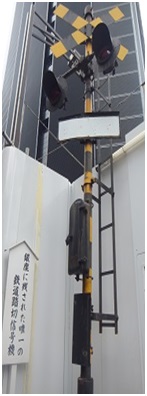
![]() Former Japanese National Railways Railroad Crossing Signal
Former Japanese National Railways Railroad Crossing Signal
![]() Because there was no representative organization to gather opinions from the Meiji period and domestic business and industrialists, it was extremely difficult to revise the inequality treaty. Therefore, Ito Hirobumi and Shigenobu Okuma request Eiichi Shibusawa to establish a representative organization.
Because there was no representative organization to gather opinions from the Meiji period and domestic business and industrialists, it was extremely difficult to revise the inequality treaty. Therefore, Ito Hirobumi and Shigenobu Okuma request Eiichi Shibusawa to establish a representative organization.
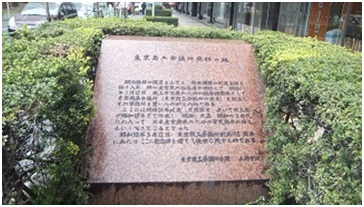
1878, Meiji 11 (1878),
Japan's first Chamber of Commerce
The Tokyo Commercial Code Chamber will be established.
This monument was erected at the birthplace to commemorate the 100th anniversary of its founding.
There is Shimbashi Enbujo on the left side. It's easy to overlook.
![]() The site of Shozan Sakuma School
The site of Shozan Sakuma School
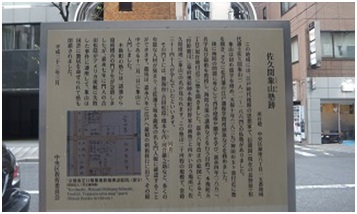
In Kaei era 4 <1851>, he opened a military school to give lectures on military science, artillery, and maritime defense measures.
Kaishu Katsu, Yoshida Shoin, Sanai Hashimoto, Jinnosuke Kawai, etc. gather under the gate, and Ryoma Sakamoto temporarily registers. Kaei era 7 <1854> The school was closed due to American smuggling in Yoshida Shoin.
![]() The site of Kano Art School
The site of Kano Art School
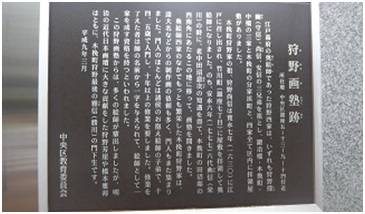
The shogunate's wife. Yotsuya Kano.
He worshiped a mansion in Kajibashi, Kibikicho, Nakahashi and Hamacho. Current Chuo-ku.
It was the Kano family in Kobiki-cho that flourished.
Norinobu Rokudai opened a private school in this area with the knowledge of Onaka Okitsugu Tanuma. Yoshinori Kano and Gaho Hashimoto are from this school.
As mentioned above, it was a walk around Ginza 5-8-chome![]()


